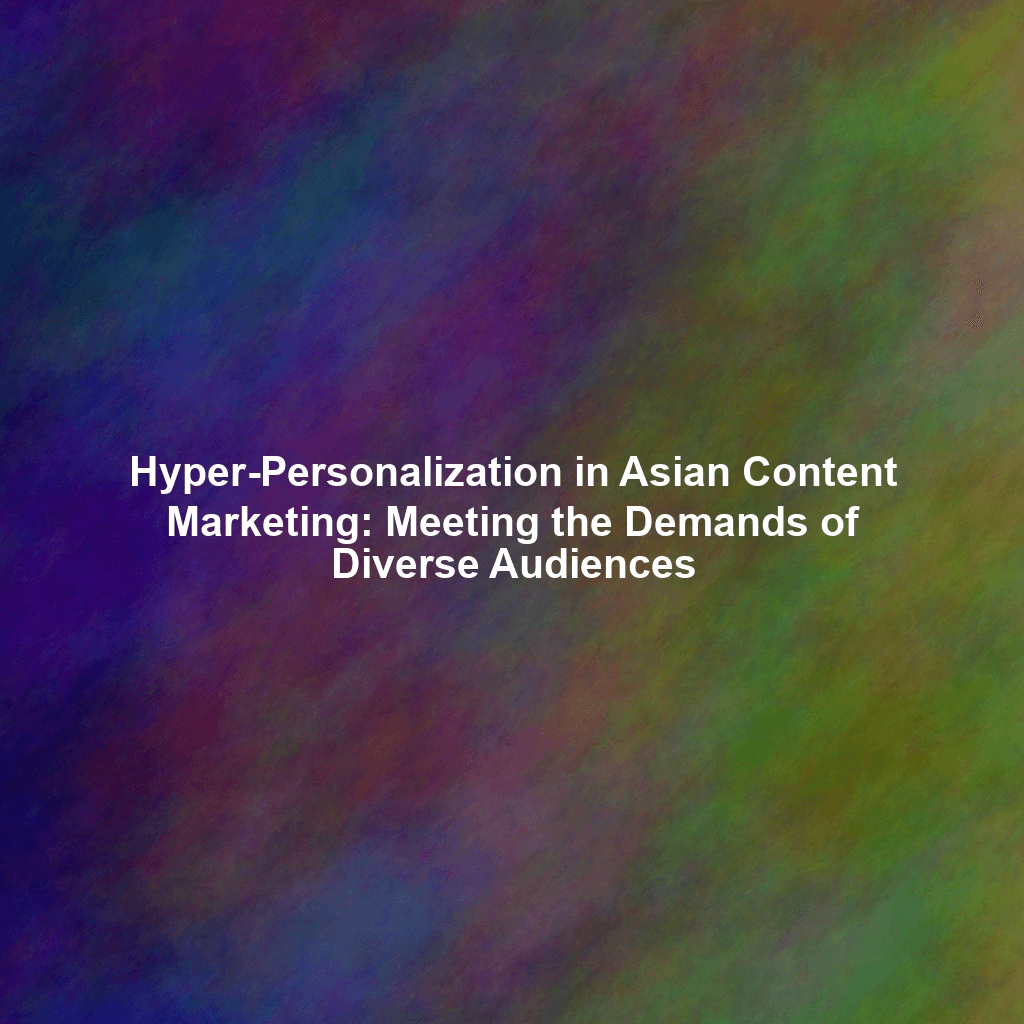Understanding the Asian Content Marketing Landscape in 2025
The Asian market isn’t a monolith; it’s a tapestry woven with distinct cultures, languages, and technological adoption rates. In 2025, we can expect to see these trends amplified:
- Mobile-First Dominance: Smartphones will continue to be the primary gateway to the internet for the majority of Asian consumers. Content must be optimized for mobile viewing and interaction.
- Social Commerce Integration: Social media platforms will evolve into even more sophisticated commerce ecosystems, blurring the lines between content, community, and purchasing.
- Rise of AI-Powered Personalization: Artificial intelligence will play a crucial role in analyzing user data and delivering personalized content at scale.
- Emphasis on Authentic Storytelling: Consumers will demand authenticity and transparency from brands, seeking content that reflects their values and aspirations.
- Local Language Content Imperative: Generic translations will no longer suffice. Content must be adapted to local dialects and cultural nuances.
Why Hyper-Personalization Matters in Asia
Hyper-personalization goes beyond basic segmentation. It’s about creating a unique content experience for each individual based on their behavior, preferences, and context. Here’s why it’s crucial in the Asian market:
- Increased Engagement: Relevant content captures attention and encourages interaction.
- Improved Conversion Rates: Personalized offers and calls to action are more likely to drive sales.
- Enhanced Customer Loyalty: Customers appreciate brands that understand and cater to their individual needs.
- Stronger Brand Affinity: Personalized content fosters a deeper connection between brands and consumers.
- Competitive Advantage: In a crowded marketplace, hyper-personalization can differentiate your brand from the competition.
Strategies for Implementing Hyper-Personalization
Implementing hyper-personalization requires a strategic approach and the right tools. Here are some key strategies:
1. Data Collection and Analysis
The foundation of hyper-personalization is data. Collect data from various sources, including:
- Website Analytics: Track user behavior on your website, such as page views, time spent on site, and clicks.
- Social Media Insights: Analyze social media data to understand audience demographics, interests, and engagement patterns.
- CRM Data: Leverage CRM data to gain insights into customer purchase history, preferences, and communication preferences.
- Email Marketing Data: Track email open rates, click-through rates, and conversions to understand what resonates with your audience.
- Third-Party Data: Supplement your own data with third-party data to enrich your understanding of your target audience.
Use AI-powered analytics tools to analyze this data and identify patterns and trends. This will help you create more targeted and relevant content.
2. Segmenting Audiences Based on Cultural Nuances
Go beyond basic demographic segmentation. Consider cultural factors such as:
- Language: Adapt content to local dialects and colloquialisms.
- Religion: Be mindful of religious sensitivities and observances.
- Traditions and Customs: Incorporate relevant cultural references and traditions.
- Values: Align your content with the values and beliefs of your target audience.
For example, marketing campaigns targeting Lunar New Year should be tailored to the specific traditions and customs of each country or region.
3. Leveraging AI for Content Personalization
AI can automate the process of content personalization at scale. Consider using AI-powered tools for:
- Content Recommendation: Recommend relevant articles, videos, and products based on user behavior.
- Personalized Messaging: Craft personalized email campaigns and social media posts.
- Dynamic Content Creation: Generate content that adapts to individual user preferences.
- Real-Time Personalization: Adjust content based on real-time user behavior.
For instance, AI can analyze a user’s browsing history and recommend products that are relevant to their interests. It can also personalize email subject lines and body copy to increase open rates and click-through rates.
4. Building Trust Through Authentic Storytelling
In 2025, Asian consumers will be more discerning than ever. They’ll demand authenticity and transparency from brands. Focus on:
- Sharing real-life stories: Feature customer testimonials and case studies that demonstrate the value of your products or services.
- Being transparent about your company values: Communicate your company’s mission and values in a clear and authentic way.
- Engaging in meaningful conversations: Listen to your audience and respond to their comments and questions in a genuine way.
- Collaborating with local influencers: Partner with influencers who are respected and trusted by your target audience.
5. Optimizing for Mobile and Voice Search
With the continued dominance of mobile in Asia, ensure your content is fully optimized for mobile devices. This includes:
- Responsive design: Ensure your website and content are easily viewable on all screen sizes.
- Fast loading times: Optimize images and videos to reduce loading times.
- Voice search optimization: Optimize your content for voice search by using natural language keywords and phrases.
Tools and Technologies for Hyper-Personalization
Several tools and technologies can help you implement hyper-personalization:
- Customer Relationship Management (CRM) systems: Salesforce, HubSpot, Zoho CRM
- Marketing Automation Platforms: Marketo, Pardot, ActiveCampaign
- Personalization Platforms: Optimizely, Evergage, Dynamic Yield
- AI-Powered Analytics Tools: Google Analytics, Adobe Analytics, IBM Watson Analytics
Challenges and Considerations
While hyper-personalization offers significant benefits, it’s important to be aware of the potential challenges:
- Data Privacy: Ensure you comply with data privacy regulations and obtain consent before collecting and using personal data.
- Data Security: Protect customer data from breaches and cyberattacks.
- Algorithmic Bias: Be aware of the potential for algorithmic bias and take steps to mitigate it.
- Over-Personalization: Avoid creating content that is too intrusive or creepy. Find the right balance between personalization and privacy.
 Skip to content
Skip to content

